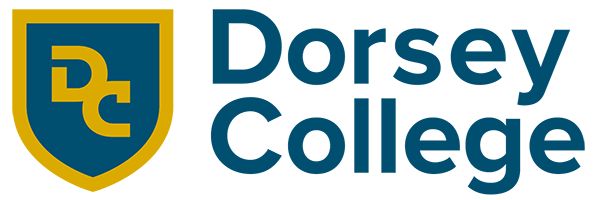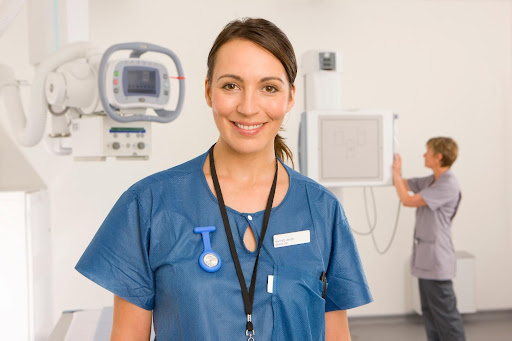Do you want to pursue a career in healthcare where you can play an active role by helping in the process of doctors diagnosing patients? If so, becoming a Radiologic Technologist may be a career path worth pursuing. You may be wondering how to become a radiologic technologist? What type of training and education is needed? Do you need to be certified? Is this a long process? Don’t worry, we are going to walk you through a step-by-step guide on how to become a Radiologic Technologist. Continue reading below to learn more about the process you’ll want to follow to pursue a career as a Radiologic Technologist.
Get Started With Your Radiologic Technology Training Today!
Education Requirements to Become a Radiologic Technologist
One of the first questions you may be asking regarding how to become a radiologic technologist is about the training and education you’ll need. When it comes to education requirements to become a Radiologic Technologist, individuals will typically enroll in an Associate Degree program that focuses on Radiographic or Radiologic Technology.
Associate Degree programs are typically two years in length and consist of both general education and career-specific courses. General education courses typically focus on helping students develop a strong educational foundation in specific areas prior to beginning their career-specific classes. Don’t take these courses lightly. Their learning objectives and the skills you can learn could be helpful to you as you advance through your training.
The career-specific classes as part of your education will likely cover a variety of topics. Some of those topics may include the basics of radiographic technology, providing safe and effective patient care, adhering to safety and regulatory guidelines, how to perform imaging scans on various areas/regions of the body, and image analysis and quality management.
It’s important to keep in mind that what you learn is important, but how you learn is equally important. Radiologic Technologists work directly with patients, so it is imperative that you select a program that will have a strong hands-on component and provide you with a variety of opportunities to not only develop your new skills but master them with practice as well.
Training Requirements to Become a Radiologic Technologist
There are certain training requirements to become a Radiologic Technologist that you’ll want to make sure you are exposed to and learn while in school. Radiologic Techs are responsible for running scans that produce diagnostic images for doctors. As a result, your training should include exposure to the scans you may take, how to administer scans on different areas/regions of the body, and how to ensure the scans produce the best images possible. After all, doctors will rely on those images as they attempt to diagnose a patient.
In addition, the equipment Rad Techs work with daily requires that they adhere to strict safety guidelines to preserve the safety of patients and staff. In addition, there are regulations they will have to comply with as part of their role. A student’s training program should have a strong focus on both patient care and safety to ensure Radiologic Technologists know exactly what to do once they are on the job.
Training programs will often include a clinical training component. The value of this experience cannot be understated. Clinical training provides students with an opportunity to apply the knowledge and skills they learned in the classroom in real-world scenarios.
While many Radiologic Technology programs will have these things included, it’s still important to ask questions about how the Radiologic Technologist education at the school is delivered. Do you feel comfortable with the school’s approach to Radiologic Technologist training? Are there components that one school may offer that others do not? These questions can help you select the Radiologic Technologist school or program that may be best for you.
Sign up for a Radiologic Technology Program Today!
Becoming a Registered Radiographer
Once you have completed your Rad Tech education, you may be eligible to sit for the American Registry of Radiologic Technologists (ARRT) registry examination. Those who successfully challenge this exam can become a registered radiographer. Some employers may even require their Rad Techs to be registered.
Regardless of whether it’s required or not, it’s always a good idea to pursue applicable certification (or in this case, the exam to become a registered radiographer). Obtaining certifications, and gaining recognition from registries and certifying agencies can assist individuals in obtaining and maintaining employment. This is because having a certification or being included on a registry can show prospective employers that you have taken the time and effort to apply what you have learned in your education to earn this credential.
The Associate of Applied Science in Radiologic Technology program at Dorsey College
The Associate of Applied Science in Radiologic Technology program at Dorsey College is designed to prepare individuals to pursue a career as a Radiologic Technologist. The curriculum in this program is comprised of specialized radiography courses with concentrated study in the basic sciences and mathematics. A key area of focus in the program is placed on radiation protection and quality patient care. Those who successfully complete this program and have met all of the necessary requirements, will receive an Associate of Applied Science in Radiologic Technology, and may be eligible to sit for the American Registry of Radiologic Technologists (ARRT) registry examination to become a registered radiographer.
The Associate of Applied Science in Radiologic Technology program is offered at the Dorsey College Dearborn campus (a branch campus of Madison Heights). This program is also delivered in a hybrid format. That means you’ll have some of your classes online (via distance education) and others will be held at Dorsey College. It’s the best of both worlds! The program also includes a clinical training component.
To learn more about how you can train to become a Radiologic Technologist, contact Dorsey College today to get more info on the Associate of Applied Science in Radiologic Technology program!

